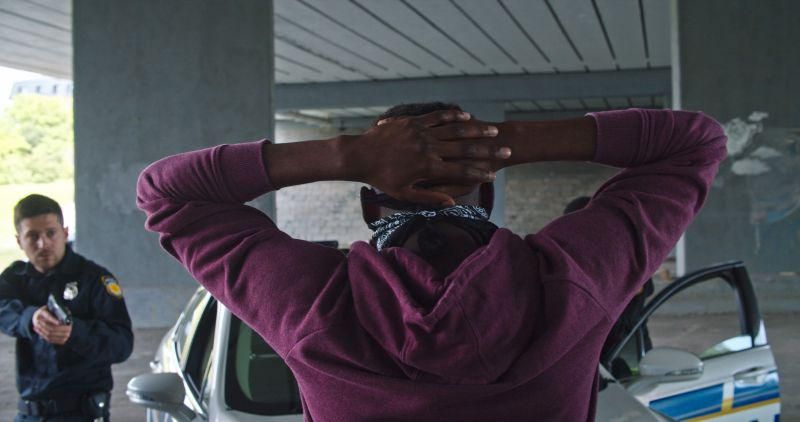THURSDAY, May 6, 2021 (HealthDay News) — A new survey confirms what many young Black Americans already know: They are vulnerable to anxiety disorders, particularly during contact with the police or in anticipation of police contact.
“I think it’s important, given what’s going on in society,” said survey author Robert Motley, Race and Opportunity Lab Manager at Washington University in St. Louis.
“And I think it helps us to get a better understanding because a lot of this research on police violence and mental health outcomes have really only started burgeoning since the Mike Brown incident,” Motley said, referencing the shooting of a Black teenager by a white police officer in Ferguson, Mo.
“We still don’t fully know its impact, number one, because we don’t really know the true rates of exposure, not even how many people are killed by police but how many people are just exposed to nonfatal police use of force,” he said.
The survey found that police contact anxiety was moderately high among the 300 survey participants, all of whom attended a community college or university in St. Louis. Being male, unemployed and having witnessed more community violence were significantly associated with greater police contact anxiety.
Researchers used a scale to assess the severity of anxiety symptoms that a participant experienced in the past 30 days during or when anticipating police contact in light of past experiences, including directly experiencing police use of force, witnessing use of force or seeing a video of police use of force in the media.
The study also found that on average, the survey participants had experienced police use of force nearly two times each, had witnessed in-person police use of force more than seven times and had seen video of police use of force more than 34 times.
Participants had also witnessed community violence — violent acts among others not involving police — an average of more than 10 times during their lifetimes.
Motley said his research interest was always in community violence exposure among young Black adults, but he was further influenced by the violence that happened shortly after he arrived in St. Louis, when Michael Brown, an unarmed teenager, was shot by a police officer in 2014.
Brown is one of many names familiar to those who study police violence or read the news, including George Floyd who was killed in Minnesota last year.
The study was presented at the American Psychiatric Association’s virtual annual meeting last weekend. Findings presented at medical meetings are considered preliminary until published in a peer-reviewed journal.
When someone does not get help for their anxiety, this can lead to behaviors such as substance abuse, as well as shutting down emotionally and not engaging in school. It can have a negative impact on family and relationships, Motley noted.
Anxiety can activate the body’s stress response system making it hard to focus, prioritize tasks, and causing a person to be preoccupied with a sense of danger around them, said Dr. Jessica Isom, a psychiatrist at Codman Square Health Center in Boston. Chronic stress can lead to other health issues, from high blood pressure to poor sleep quality, she added.
“Chronic stress experienced across the board as a person who is Black in this country, essentially, it’s all contributing to the same thing, which is a detrimental effect on the body and the mind,” said Isom, who wasn’t part of the study.
There can be triggers for police contact anxiety in everyday life, in such obvious ways as seeing a police car while driving and becoming preoccupied by whether the officers are paying attention to you and will pull you over to seeing a security guard at the mall or in a bank, she said.
Providers such as doctors and teachers can work to reduce race-based stress by ensuring they’re not contributing to it in their work. For police specifically, Isom suggests a trauma-informed approach.
“The only way to ensure that you’re approaching people in a way that’s humane is the same thing that we do in health care. We have to approach people from a trauma-informed lens, which means that you would view the interaction through the lens of maybe this person has not had a positive prior experience and might be reacting to a catastrophic idea of what this interaction means,” Isom said.
“For that reason, you would take extra care to 1. check in on how they’re experiencing the interaction; 2. provide information about what you’re doing and why you’re doing it and, 3. keep yourself under control. Your heightened stress response as the person who holds the power is not going to help the person who is subjected to your power,” she said.
Motley would now like to study a larger sample of individuals and begin to establish national estimates for exposure to violence.
These findings could help doctors be more aware when they see a person from a racial minority in their practices, including in the emergency room, that they should assess a person’s exposure to violence and anxiety symptoms, he said.
“And hopefully we can provide them with the adequate care that they need,” Motley said.
More information
The Washington Post has maintained a database of shootings by on-duty police officers since 2015.
SOURCES: Robert Motley, PhD, Race and Opportunity Lab Manager, Washington University, St. Louis, Mo.; Jessica Isom, MD, MPH, psychiatrist, Codman Square Health Center, Boston, and clinical instructor, Yale University, New Haven, Conn.; American Psychiatric Association annual meeting, May 1-3, 2021
Copyright © 2025 HealthDay. All rights reserved.

